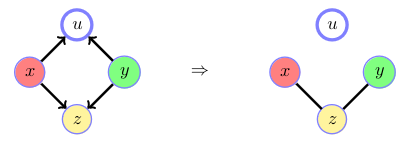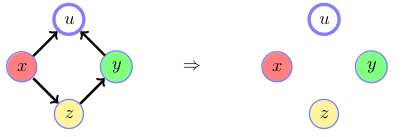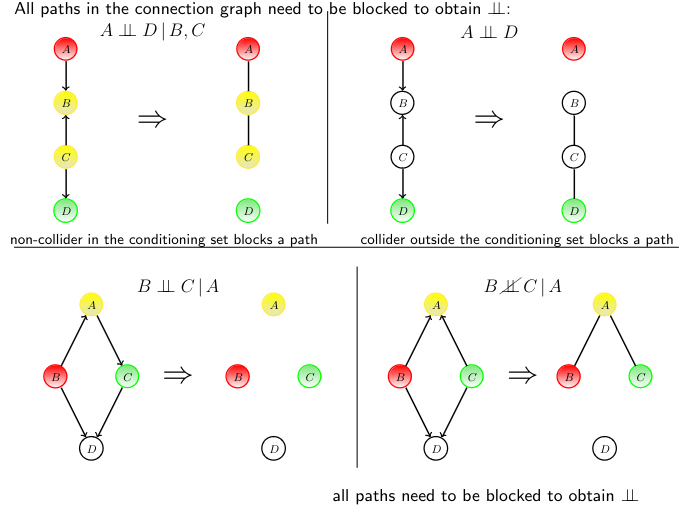Connection Graph
Table of contents
A connection graph is a means to investigate if \(x {\perp \!\!\! \perp} y \mid z\) this is done by:
- Construct the connection graph to investigate the dependence between ONE pair of variables \(x\) and \(y\).
- If \(x\) and \(y\) are connected in the connection graph: \(x \not{\!\perp\!\!\!\perp} y\).
- Repeat for other pairs of variables.
Construction a Connection Graph
If \(z\) is a collider (bottom path) keep undirected links between the neighbours of the collider.

If \(z\) is a descendant of a collider, this could induce dependence so we retain the links (making them undirected)

If there is a collider not in the conditioning set (upper path) we cut the links to the collider variable. In this case the upper path between \(x\) and \(y\) is ‘blocked’.

If there is a non-collider which is in the conditioning set (bottom path), we cut the link between the neighbours of this non-collider which cannot induce dependence between \(x\) and \(y\). The bottom path is ‘blocked’.

In this case, neither path contributes to dependence and hance \(x {\perp \!\!\! \perp} y \mid z\). Both paths are ‘blocked’.

Whilst \(z\) is a collider in the conditioning set, \(w\) is a collider that is not in the conditioning set. This means that there is no path between \(x\) and \(y\), hence \(x\) and \(y\) are independent given \(z\).

Reading a Connection Graph
